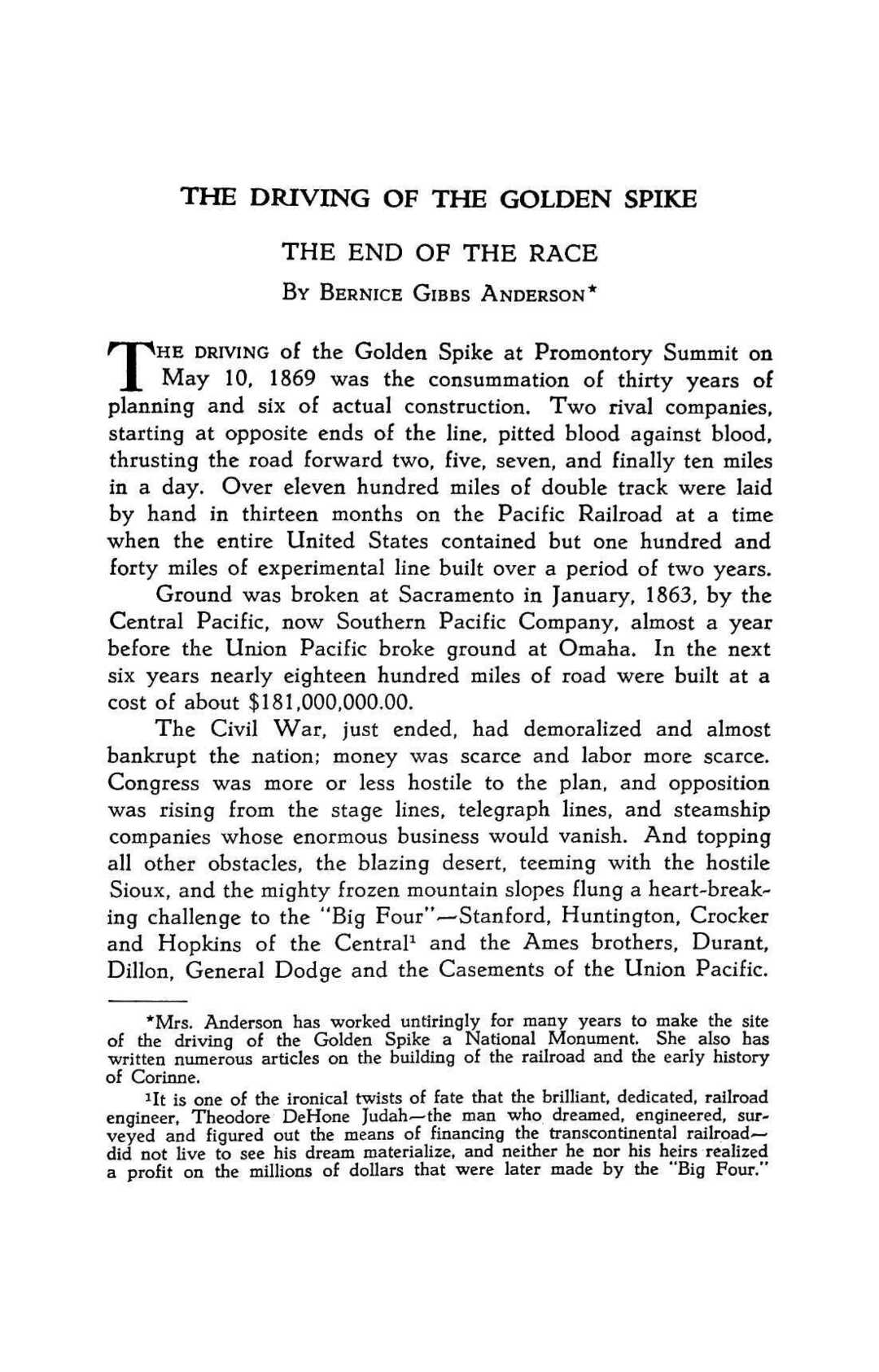T H E S E A R C H FOR T H E F A B U L O U S I N T H E SETTLEMENT OF THE S O U T H W E S T BY GEORGE P.
HAMMOND"
I
T IS a very great pleasure to be your guest tonight, on the occasion of the annual meeting of the Utah State Historical Society; it has always been a joy for me to visit this state, in part for rather personal reasons, and in part for more general, historical reasons. T h e personal stems from the fact that the young lady who became my wife was born in Ogden, where her family had lived for some time—not exactly in the pioneer days, it is true, though Ogden then boasted of the overland railroad, the traffic it carried, the immigrants who followed its rails westward, and the people who gained employment from it. For more general reasons, Utah is of interest to every historian of the west. Historically, it figured as the northern edge of the Spanish Empire, claimed but not explored till the Escalante expedition of 1776, and not yet occupied when the Mexican W a r severed it from its ancient roots in Mexico and Spain. Even before that war ended, however, it had become the mecca of the Mormon pioneers seeking a haven in the west; and it figured in the great Compromise of 1850, when the nation was on the verge of separating into two warring camps over the slavery issue. T h e compromise provided that the enormous piece of territory obtained from Mexico should be divided into two territories, Utah and New Mexico, without restriction as to slavery. That is, the people of each were to decide the question of slave or free status for itself. These two territories at that time did not resemble the present states, for the entire Mexican Cession, from Texas to the California border, was slit lengthwise, like a banana, from east to west, the southern half being called New Mexico and the northern half, Utah. *Dr. Hammond is director of the Bancroft Library, University of California, Berkeley, California, and professor of history in that institution. He is the editor and author of many volumes dealing with the history of the great southwest The above was the principal address delivered at the fourth annual meeting of the Utah State Historical Society, October 22, 1955.




















